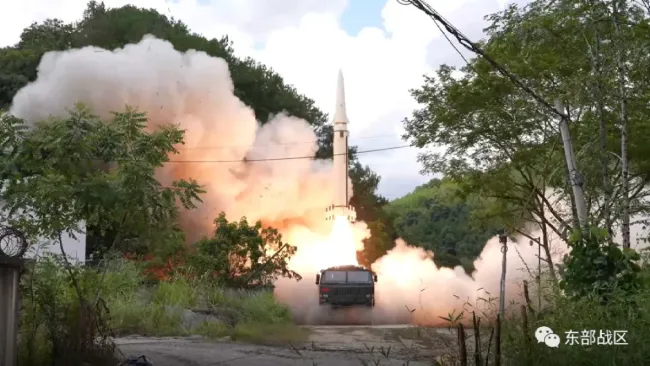China Escalates Aggression: Taiwan Under Fire as Missiles Rain Near Pingtan Island
The South China Sea is once again on edge as China flexes its military muscle, launching a brazen assault near Taiwan. Bombing areas perilously close to Taiwan’s territorial waters and firing multiple-launch rocket system (MLRS) missiles from Pingtan Island, Beijing has sent a chilling message of dominance.
The Provocation: A Brazen Show of Force
Pingtan Island, strategically perched as the mainland’s closest point to Taiwan, has become the launchpad for China’s latest act of hostility. In the early hours, Chinese coastal artillery unleashed a thunderous barrage of MLRS missiles, their trajectories arcing ominously over the Taiwan Strait. Beijing’s state media dismissed the event as "routine exercises," but the intensity and timing tell a far more sinister story.
Simultaneously, Taiwan’s defense officials reported bombings perilously close to the northern edge of Taiwan’s air defense identification zone (ADIZ). With J-16 fighter jets and H-6 bombers executing mock attack runs, the skies over the Strait turned into a theater of intimidation, triggering air raid sirens and scrambling Taiwanese fighters.
The deployment of China’s cutting-edge PHL-16 MLRS underscores Beijing’s unrelenting push for military superiority. This system, also known as the PCL-191, is a versatile war machine capable of firing a variety of munitions, including tactical ballistic missiles with ranges exceeding 360 km. The message is clear: China is ready and willing to escalate.
Taiwan’s Defiance: Standing Tall Amid Threats
Taiwan has wasted no time in responding to Beijing’s provocations. The Ministry of National Defense (MND) slammed China’s actions as "reckless and destabilizing," activating defensive missile systems and conducting live-fire drills in a calculated show of resilience. President Tsai Ing-wen’s message was resolute: “We will never yield to coercion or compromise our sovereignty.”
Taiwan’s defensive arsenal is primed and ready. The Thunderbolt-2000 MLRS, a locally developed system, forms the backbone of its coastal defenses. Designed for rapid deployment and high mobility, it can rain destruction on amphibious assault forces with precision-guided rockets.
Moreover, the Hsiung Feng IIE cruise missile, capable of striking targets over 1,200 km away, offers Taiwan a powerful deterrent. The Hsiung Sheng variant, in particular, can target key Chinese infrastructure deep inland, signaling that any aggression will come at a steep cost.
The World Reacts: Condemnation and Countermeasures
The global response has been swift and unequivocal. The United States, bound by the Taiwan Relations Act, has condemned China’s actions and bolstered its naval presence in the region. Aircraft carriers and destroyers now patrol the South China Sea, a clear signal that Washington will not stand idle.
Allies like Japan and Australia have voiced grave concerns, urging China to step back from the brink. The European Union has echoed these sentiments, warning of catastrophic consequences if tensions spiral out of control.
Strategic Calculations: A Precursor to Conflict?
China’s actions near Pingtan Island are no accident. Analysts see them as part of a broader strategy to intimidate Taiwan and test the resolve of its allies. The island’s proximity to Taiwan makes it an ideal staging ground for military operations, while the use of advanced weaponry highlights Beijing’s readiness to back its threats with action.
This aggression has reignited debates about Taiwan’s sovereignty and the fragile "One China" policy. While Beijing insists on its claim over Taiwan, the island’s democratic government remains steadfast in asserting its independence. The stakes have never been higher, and the margin for error is dangerously thin.
Conclusion: A Dangerous Game of Brinkmanship
The Taiwan Strait has become a powder keg, with China’s latest provocations pushing the region closer to the edge. Taiwan’s unwavering defiance and the international community’s unified response will be crucial in shaping the outcome of this high-stakes standoff.
As the world watches, the drums of war grow louder. The question now is whether diplomacy can pull the region back from the precipice, or if the specter of conflict will become an unrelenting reality.
